For over two years, protests against COVID-19 measures such as lockdowns and vaccinations have drawn tens of thousands to the streets of Vienna.
They continuously make headlines for being a gathering space for far-right and neo-Nazi groups, and for their rowdy and sometimes even violent behaviour.
Now, their focus has shifted to Ukraine — but not in support of the country.
“Bucha was the biggest Ukrainian false-flag operation until now”, said a recent post on a Telegram channel belonging to the German-language offshoot of the QAnon movement, gathering more than 13,000 users from Germany, Switzerland, and Austria.
They claimed Bucha was a “fake” fabricated to discredit the Russian army.
Inspired by the conspiracy theory that began as a claim that US political elites ran a secret Satanic cabal slash paedophile ring from a pizza store, QAnon has turned into a powerful political movement in the United States and inspired countless copycats across the pond.
Most of them gather supporters among people with strong anti-elite and anti-establishment leanings, and those who are sceptical of government initiatives — which is why those opposing vaccines and COVID-19 measures were the first to join.
Now, the German QAnon sings the praises of Vladimir Putin and his army and criticises the government in Kyiv – who they see as western puppets.
At recent rallies in the Austrian capital, the QAnon flag flown by the Capitol rioters on 6 January 2021 was proudly exhibited next to that of Russia.
The letter Z, known for being painted on the sides of Russian tanks, has now also made an appearance.
For journalist and author Michael Bonvalot, who regularly follows the anti-vax protests in Vienna, the fact that the Austrian far-right has openly shifted to Putin-worship does not surprise him.
“From the very first protest in Vienna in April 2020 it was very clear that well-known far-right and neo-Nazi activists were participating,” Bonvalot recalled for Euronews.
“It became even clearer in May of that year when one of the demonstrations was officially organised by the FPÖ.
"From then you could conclude that the main organisers of the protests were far-right activists.”
Freedom Party foregoes legacy to defend Putin
FPÖ, or the Freiheitliche Partei Österreichs, is the country’s third-most-popular party known for its anti-immigrant and anti-establishment positions. At times, it has openly veered into open flirtations with Nazism, particularly during the leadership of the late Jörg Haider.
Haider, a far-right populist who popularised the party in the late 1980s, made a name for himself as Austria’s most scandalous son.
He engaged in public friendships with the likes of Saddam Hussein and Muammar Gaddafi, and made statements that minimised the Holocaust and showered praise for the Nazi German government and Austrian SS troops.
However, he was staunchly anti-Kremlin. For Haider, one of the first mainstream politicians to openly call for pan-German unity after World War II, Russia was an enemy due to its communist past.
But FPÖ changed its direction after Haider’s departure from the party and his death in a car accident in 2008 and grew increasingly closer to Putin, such as publicly supporting Moscow’s wars including the 2008 invasion of Georgia and signing a cooperation agreement with the United Russia party in 2016.
In 2019, a scandal erupted involving a leaked video with Vice-Chancellor and FPÖ leader Heinz-Christian Strache and his deputy Johann Gudenus, where they were revealed to have promised lucrative Austrian government tenders to Russian oligarchs while on vacation in Ibiza.
Ibizagate, as it has since been known, marks perhaps the clearest indication of the soft spot FPÖ has fostered for Russian political and financial influence.
The leaked recording led Strache to lose his government post and launched Austria into a political crisis, causing Chancellor Sebastian Kurz to drop FPÖ as his ruling coalition partner.
This resulted in resentment both within FPÖ and their supporters, who lent their support to Kurz at a time when he needed right-wing bona fides.
In response, party leader Herbert Kickl and the likes of Strache mobilised their supporters and joined in on the anti-vax protests against the government and Kurz himself.
By March 2021, the movement grew to the point where police in Vienna came out in large numbers to monitor the thousands marching the streets carrying old imperial German flags in the colours of red, white and black, but also placards complaining about the “Plandemic” as well as QAnon banners.
Kickl, who was Haider’s former speechwriter and interior minister before FPÖ was kicked out, gave an impassioned speech on 6 March focused almost entirely on Kurz, labelling the lockdowns and vaccine mandates as a “crazed obsession with power".
“All the measures this government has passed are the result of an extraordinary power-trip on their end,” Kickl said, repeating that the strength of those gathered lies in “our numbers and our persistence and that is how we will take down Kurz & Co”.
“We have a strong immune system, especially against mutations that have suddenly been discovered by some people. Now we have become the immune system for our democracy,” Kickl stated.
“This immune system becomes stronger every day, and our opponents become weaker.”
'Alternative independent channels' and 'magazines for patriots'
Kurz resigned in October 2021 after a corruption probe threatened to trigger a vote of no-confidence in parliament. Yet, Kickl — who has defended Putin in the past and made repeated claims that NATO is at fault for the invasion — continues to appear with the anti-vaxxers.
Their movement is now bolstered by a full-fledged media outlet, AUF1, which labels itself as an “alternative independent channel”.
Its editor-in-chief Stefan Magnet is a former activist of the Bund freier Jugend or League of Free Youth, a neo-Nazi extremist group and major proponent of the “blood-and-soil” ideology.
Magnet was arrested in 2007 under accusations that he and two other BfJ members violated the Nazi Prohibition Act but ended up being acquitted after spending six months in prison.
In 2011, he founded a media and advertising company called Medienlogistik, which produced advertising videos for the FPÖ regional leader in Oberösterreich, Manfred Haimbuchner.
Magnet also worked as an advisor to Info-Direkt, an online outlet that brands itself as a “magazine for patriots”, known for often publishing articles written by or about members of the Identitarian movement as well as the likes of the Kremlin’s favourite ideologue, Alexander Dugin.
The Identitarians, led in Austria by Martin Sellner — who promoted AUF1 when it first started — are a pan-European far-right political group claiming that Europe belongs to whites and that they are now victims of the “Great Replacement”, an Islamophobic conspiracy theory aimed at portraying immigrants as dangerous to the continent’s societies.
Identitarian symbols are also often seen at protests of vaccine sceptics in Austria.
Since the renewed invasion of Ukraine, AUF1 — which up to that point focused on COVID-19 conspiracy theories — created a separate subsection dedicated to the war in Ukraine, publishing content stating that “this is a proxy war between Russia and the USA and NATO” or that Austria and the EU should "stay out of it".
They now regularly feature guests such as Norbert van Handel, who used to be a foreign policy advisor to Norbert Hofer, another former FPÖ leader and transport minister under Kurz.
Van Handel, a proponent of a “Central European Union” within the existing EU bloc — which, in his view, should constitute a traditionalist revival of the Austro-Hungarian Empire — is known for his anti-migrant and Islamophobic views.
He was regularly critical of the 2014 sanctions against the Kremlin over the war in Ukraine and the annexation of Crimea, stating in 2017 in an interview for the Visegrad Post that it was “silly to have sanctions against Russia, and there will be no good results in the long-term.”
According to disinformation expert Ingrid Brodnig, the shift to Ukraine was the logical continuation of what she describes as a very small, yet very loud minority in Austrian society.
“In German-speaking countries, there is a niche of these conspiracy theorists who spread and really believe COVID-19 conspiracy theories,” Brodnig told Euronews.
“For this ecosystem, the right-wing and far-right accounts are really important. Before the pandemic, these far-right accounts were already pro-Putin, so you often had articles portraying Putin as a kind of a strong leader, because Putin is the antidote to a pluralistic Europe.
“Then the pandemic happened and those right-wing accounts suddenly started talking about COVID-19 and they lured new people to their channels. And when the war in Ukraine started they made the switch back to focusing on Putin and Russia,” she explained.
“It is a very good topic, in their thinking, because you can use your existing stereotypes, like being against the mainstream media, the criticism of Europe and European states, and just apply it to a new subject. It’s how they stay alive as a community.”
Russian narratives prove successful with some
Brodnig, who was appointed Digital Ambassador of Austria to the EU by the Austrian Federal Government in 2017, pointed out that the effect that Russian propaganda had over the years across Europe should not be underestimated.
“During certain crises, you can see that Russian narratives are quite successful,” she said.
Brodnig recalled the debate in 2017 around the Khan Shaykhun chemical attack near Idlib in the midst of the war in Syria.
Although the international community and human rights organisations such as Human Rights Watch all established that the forces of President Bashar al-Assad were behind the toxic gas attack that killed 89 and injured almost 600, Russian state-run outlets claimed it was a false-flag operation.
“I remember that during that time I gave a lot of workshops and presentations, etc. and often I would have one person who would raise their hand in the end and ask, ‘but isn’t it the case that’ or ‘I also read that’ and then they would repeat such narratives.”
“For years, Russian media organisations have been trying to lure people who are interested in alternative media, and that works quite well.”
Austrian neutrality, a common Russian talking point
In the region of Oberösterreich, a party supporting vaccine scepticism called Menschen-Freiheit-Grundrechte, or People-Freedom-Rights, managed to enter the regional parliament, winning three seats in September 2021. According to the latest polls, the party has a shot at making it to the federal parliament on or before 2024.
But although this is still a relatively minor result, what the conspiracy theorists are really successful at is flooding public debate with their talking points and defining the talking points on a certain topic, and according to Brodnig, they are likely to become louder and more influential.
MPs and official institutions like the ministry of health are continuously inundated with emails and calls by people who believe in conspiracy theories, she said.
With military neutrality being one of the terms that defined the end of the Allied occupation since 1955, and with 76% of its citizens favouring neutrality according to a poll from March despite condemning Russia’s aggression on Ukraine, pro-Kremlin right-wing voices are now demanding Austria stay out of the conflict.
“I think it’s an indirect effect, but there’s always the danger that this small minority, even when it’s really small, might seem bigger than they are and might lead to a lot of questions about how strict we’re going to be about a certain law or whether we really want to have a certain debate,” Brodnig concluded.
Bonvalot, whose constant coverage of the protests led to threats on his life and safety, says that while not everyone who appears at these marches is necessarily far-right or pro-Russian — they do not mind being affiliated with them.
People have such strong opinions on the pandemic — and the alleged freedoms that they claim it hampers — even when their opinions do not align with Putin supporters, Bonvalot explains.
“People were not bothered by the fact that Austria’s most famous neo-Nazis and neo-fascists were marching alongside them in the protest — they were bothered by vaccines and compulsory vaccination,” he said.







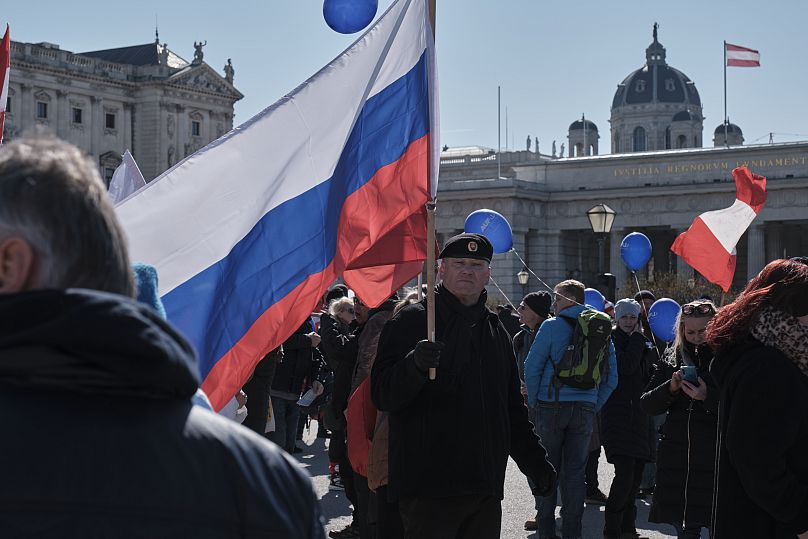
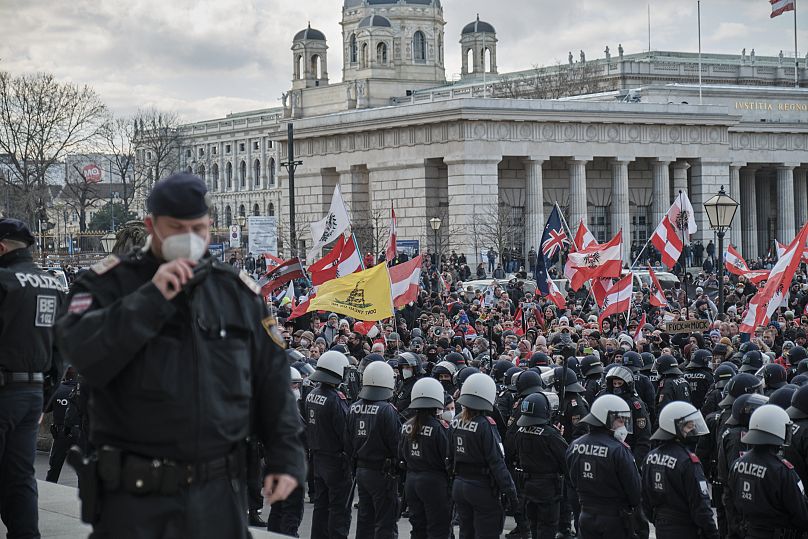
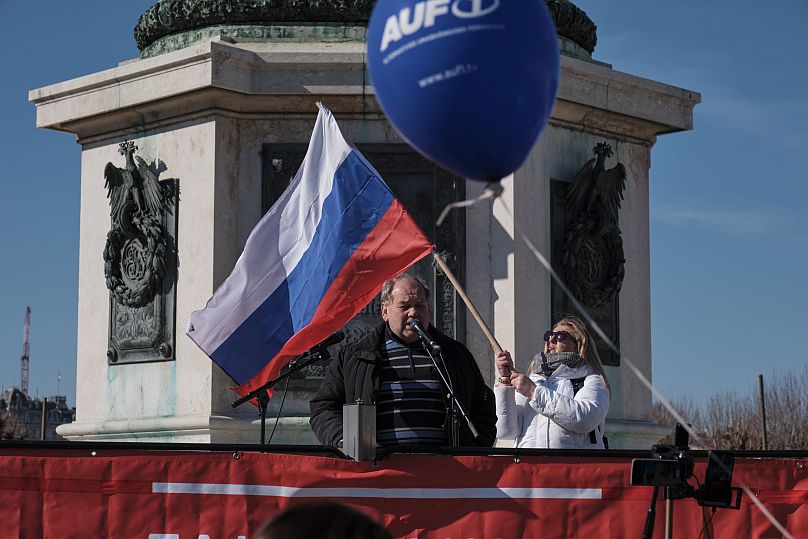
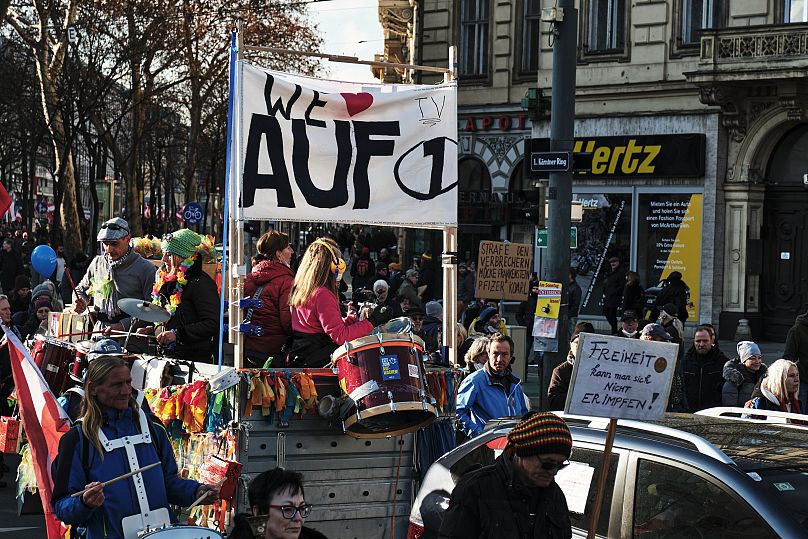
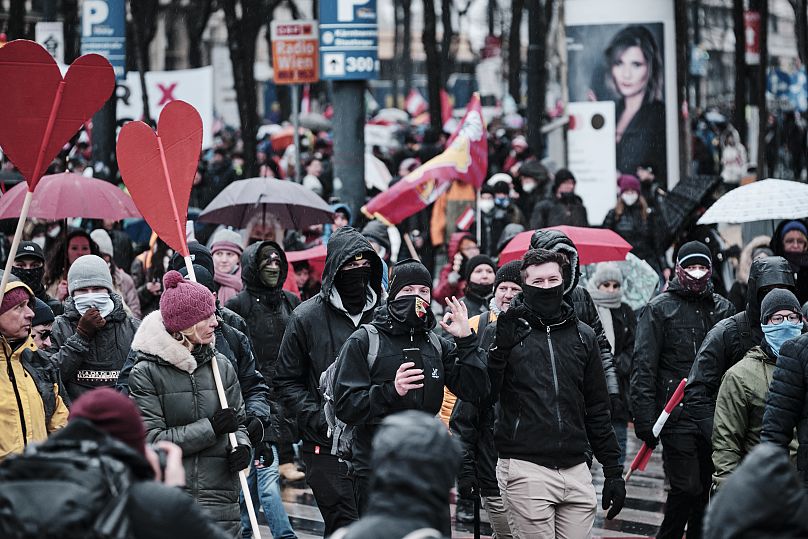

 Access Rights | Content Availability:
Access Rights | Content Availability: 










 APU Content Aggregation Service
APU Content Aggregation Service